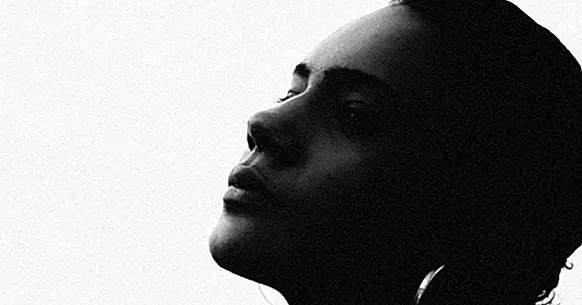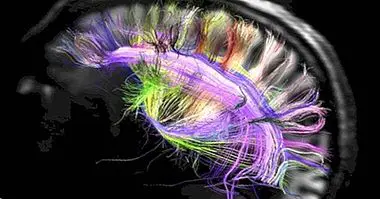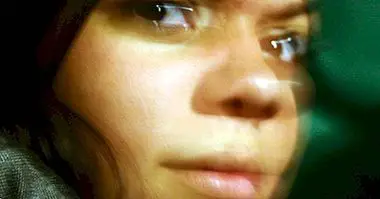Mixed adaptive disorder: symptoms, causes and treatments
Throughout our lives we have to face all kinds of events, situations or experiences that can leave a mark on our psychological health. In some people, the impact of these vital moments is so strong that it can even trigger a psychological condition.
This type of condition is known as mixed adaptive disorder . The purpose of this article is to analyze this type of disorder, its symptoms, causes and treatment; as well as to indicate which are the main differences with the rest of adaptive upheavals.
- Related article: "The 16 most common mental disorders"
What is mixed adaptive disorder?
The mixed adaptive disorder refers to a group of conditions that appear as a reaction to a stressful vital factor. Specifically, the person experiences a series of difficulties when trying to face a stressful life event or with a great emotional load , feeling marked by strong feelings of depression and anxiety.
These events or situations can include the death of a loved one, relationship problems or a job dismissal. Although any of these experiences can be distressing and stressful, some people have difficulties when managing certain stressors, which usually means the appearance of this type of psychological disorder.
In the case of mixed adaptive disorder the reaction of the person is much more severe than usual and may end up causing a very significant deterioration of social, work and / or academic functioning . Furthermore, in order to be diagnosed as such, the symptoms must appear within three months after the onset of the stressor and should not last more than six months after the factor has disappeared.
This reaction can appear in response to a single event, such as a serious traffic accident or the death of a family member, or after experiencing a stressful period of time such as serious marital or employment problems.
Usually, mixed adaptive disorder It has been associated with a high risk of suicide or suicidal behavior and with the abuse of toxic substances. In addition, a mixed adaptive disorder that persists can become a much more serious mental disorder such as major depressive disorder.
- Maybe you're interested: "The 7 types of anxiety (causes and symptoms)"
What symptoms does it present?
Although the symptomatology can vary widely among people suffering from mixed adaptive disorder, the clinical picture of this condition includes:
- Depressed mood .
- Weep
- Low self-esteem .
- Retracted attitude.
- Suicidal ideas
- Anxiety, worry, stress and tension.
- Agitation .
- Lack of concentration.
- Social, labor or school deterioration.
- Insomnia .
- Sensation of continuous fatigue.
- Tremors and / or spasms.
- Palpitations .
- Physical discomfort such as general pain, stomachache, or chest pain.
How is it different from other adaptive disorders?
In addition to mixed adaptive disorder, there are six other types of adaptive disorders that appear in response to a stressful experience. As mentioned above, mixed adaptive disorder is characterized by both feelings of depression and anxiety. However, it is rest of disorders possess other specific qualities:
1. Adaptive disorder with depressed mood
In this case the patient tends to experience only feelings of sadness and hopelessness, as well as constant crying and anhedonia.
2. Adaptive disorder with anxious mood
The person feels pathologically overwhelmed, anxious and over-concerned; being able to reach the point of presenting problems of concentration and memory failures.
3. Adaptive disorder with behavior alteration
The symptomatology of this subtype is associated with an altered behavior pattern, which usually implies problematic, risky and reckless behaviors.
4. With mixed alteration of emotions and behavior
Collect all the types named above. Feelings of depression, anxiety and behavior problems.
5. Adaptive disorder not specified
People with this diagnosis have symptoms not associated with the above disorders. They usually include physical symptoms and / or problems with friends, family, work and / or school.
Which can be the causes?
As mentioned at the beginning of the article, the cause or trigger of a mixed adaptive disorder is found in the appearance or experience of a highly stressful factor.
In adults, this factor is usually related to economic, work or couple problems, while in children and adolescents these experiences include school problems, problems in the family or separations. On the other hand, there are other experiences that can affect people of any age like the death of a loved one, life changes, accidents, catastrophes or medical conditions such as cancer.
However, these experiences are characterized by negatively affecting any person. Therefore, there are a series of conditions that modify the way in which a person faces a stress situation and that favor the appearance of mixed adaptive disorder. These factors include:
- Existing coping strategies.
- Economic conditions.
- Availability of social support .
- Occupational and recreational opportunities.
On what is the treatment based?
Depending on the status of the person diagnosed with mixed adaptive disorder may need a short-term treatment, or a treatment for a somewhat longer period of time. In the same way, depending on the severity of the disorder, the intervention protocol in this diagnosis may include psychological therapy, medication or both.
1. Psychological therapy
Psychological therapy is usually the treatment of choice in a mixed adaptive disorder , since this allows the patient to recover their normal levels of functioning. The main objective of any type of psychological therapy is to help the person understand their situation and develop skills to cope with stressful situations.
The main types of therapy used in this disorder include:
- Family and group therapies.
- Specific support groups .
- Behavioral Cognitive Therapy.
- Strategic brief therapy.
2. Pharmacological therapy
The mission of pharmacological therapy consists of decrease some of the symptoms of this disorder such as insomnia and the physical symptoms of depression and anxiety . Commonly used medications include:
- Benzodiazepines such as lorazepam and alprazolam.
- Non-benzodiazepine anxiolytics such as gabapentin.
- Selective serotonin reuptake inhibitors (SSRIs) and serotonin and norepinephrine reuptake inhibitors (SNRIs) such as sertraline or venlafaxine.



















